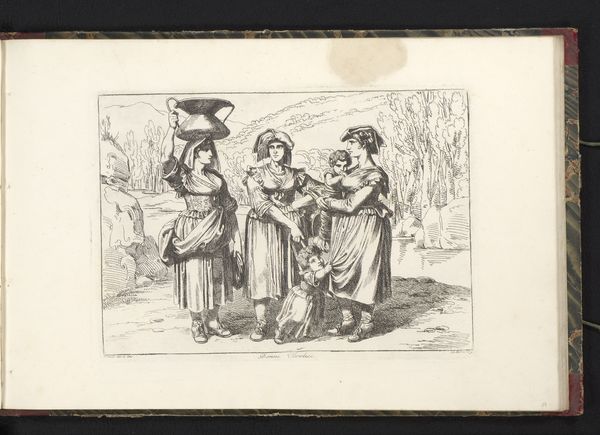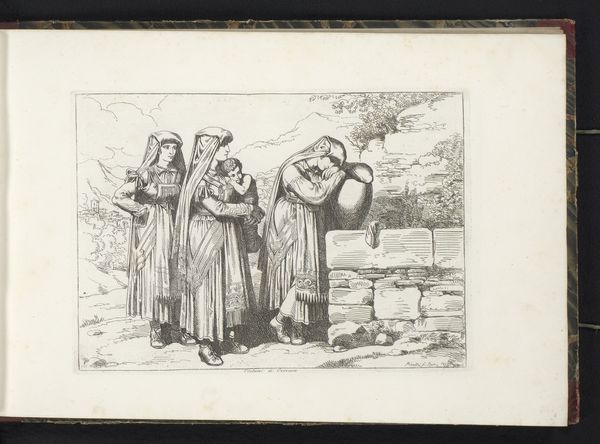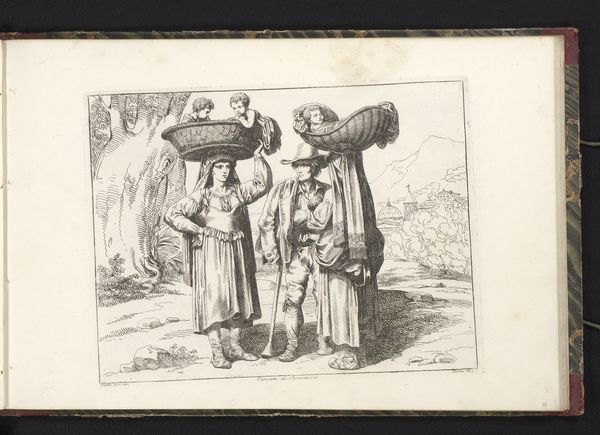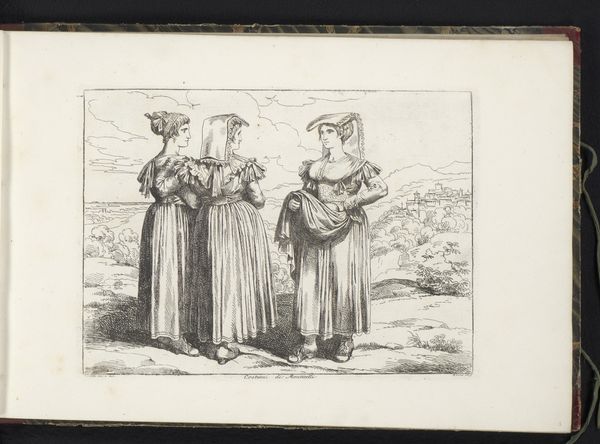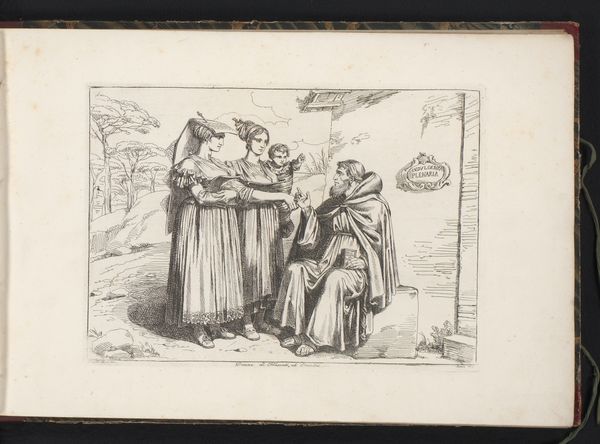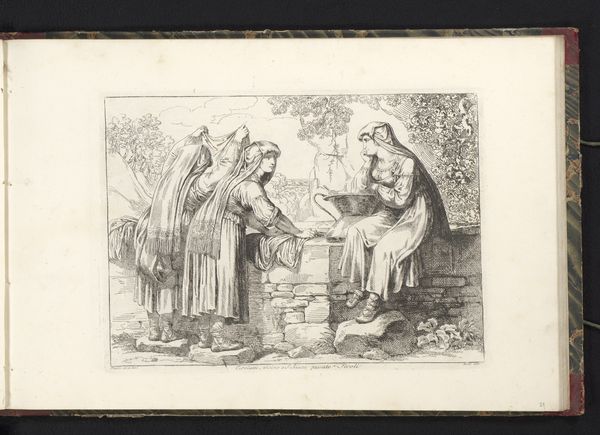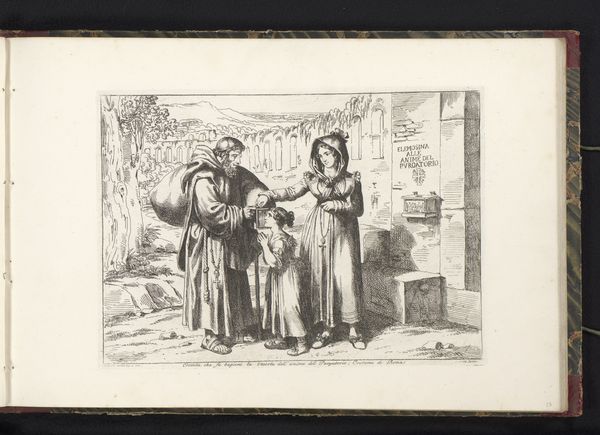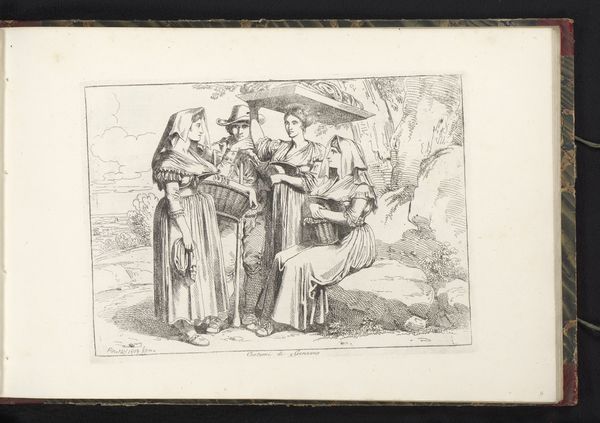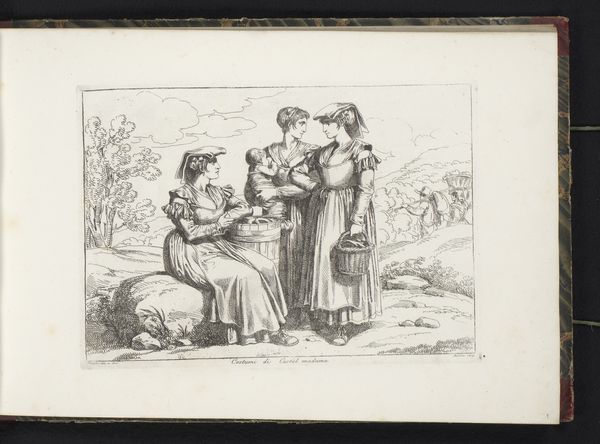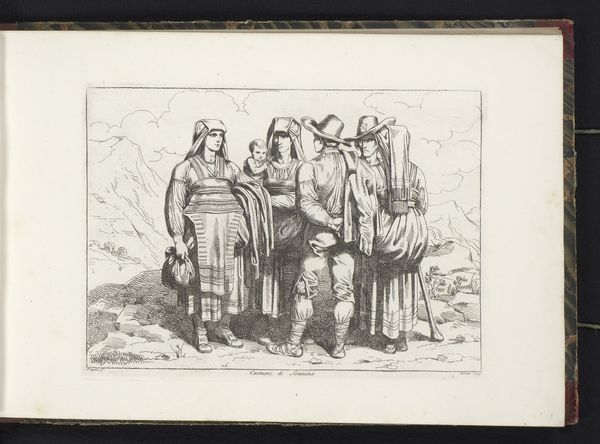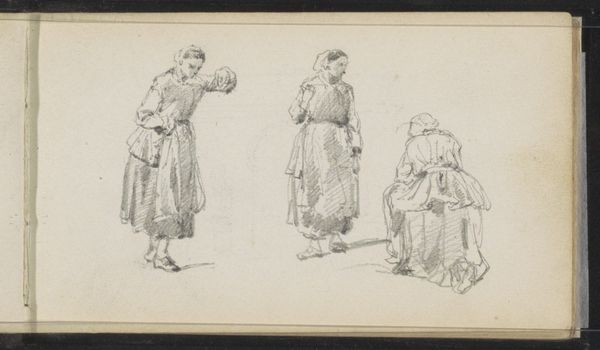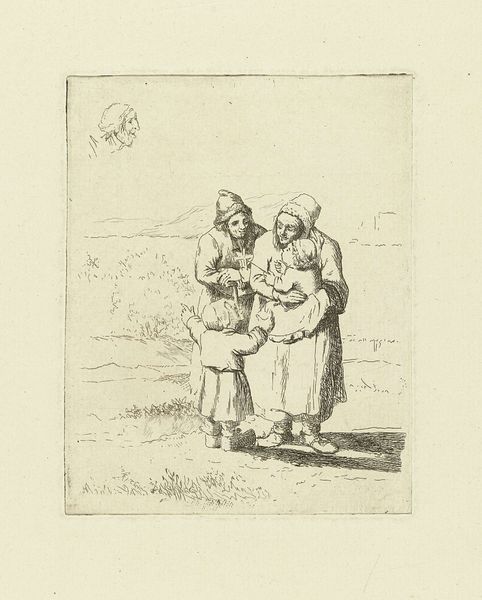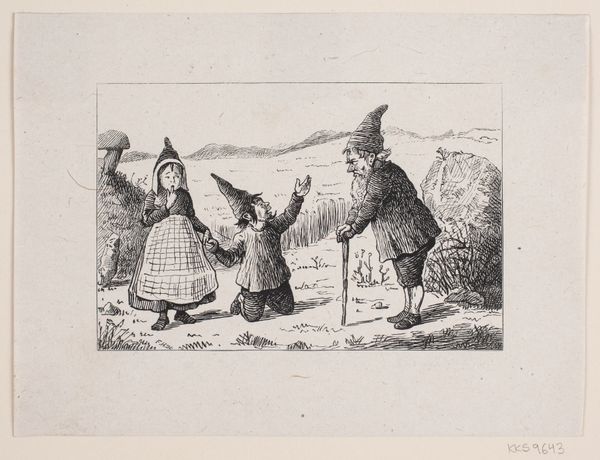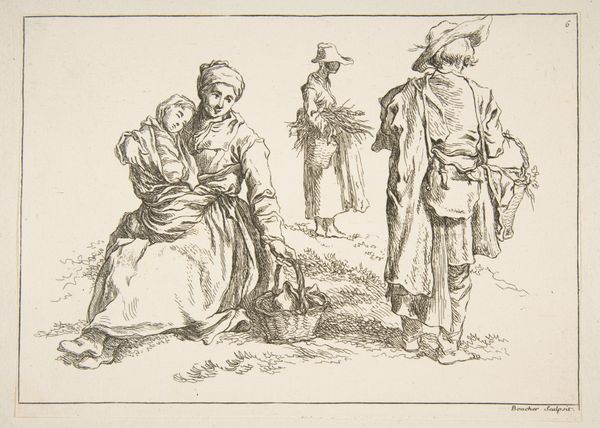
drawing, paper, ink
#
portrait
#
drawing
#
paper
#
ink
#
romanticism
#
genre-painting
Dimensions: height 203 mm, width 282 mm
Copyright: Rijks Museum: Open Domain
Curator: This is "Three Women from Sonnino" by Bartolomeo Pinelli, created in 1819. Pinelli was a master of etching, and here he used ink on paper to depict a scene from daily life in the Roman countryside. Editor: The light in this piece strikes me first. Even with the stark ink lines, the figures are rendered with such volume, the fabrics of their garments seem to catch the sun. And look at the way their expressions, it really tells of some narrative! Curator: Exactly. Pinelli wasn't just capturing what people looked like, he was also very much portraying Roman identity and social norms. His artistic production fed into a burgeoning market of grand tourists seeking out an idea of Italy, and as an etcher and engraver he made this subject-matter accessible for a broad audience. It’s genre painting but elevated through the skill and distribution. Editor: And you see how distinctly Pinelli renders the individual garments: each crease, each fold and seam is a testament to skilled labour—you start thinking of the processes that went into them. The way those lines gather and swell really conveys that handcraft so immediately. Even if they seem standardized, the clothes also mark differences: there are very minute design shifts in terms of the three different women's clothing that indicate levels of personal tastes. Curator: That focus also served the nationalist project of the Risorgimento, framing regional traditions in heroic terms and feeding the myth of a unified people rooted in common traditions. Pinelli also ran in somewhat radical circles. His etchings made imagery of popular life, popular unrest, and brigands visible—images circulated to comment and shape civic culture. Editor: That’s powerful – his decision to work with the immediacy of line in turn produced direct narratives. By attending to how ordinary clothes take on material qualities that signal class, skill, taste, and custom he delivers more than just picturesque scenery. This emphasis humanizes the scene and renders the viewer complicit in the creation of a sense of national identity. Curator: Precisely. He walks the line between objective observation and politically charged narrative. Thinking about "Three Women from Sonnino", in terms of the wider politics it speaks of the drive to visually consolidate notions of Italian-ness, through both making art available and depicting regional characters from everyday life. Editor: It's fascinating how something created with such direct and utilitarian methods— ink on paper—can carry such potent narratives about tradition, labor, and national identity even now.
Comments
No comments
Be the first to comment and join the conversation on the ultimate creative platform.
